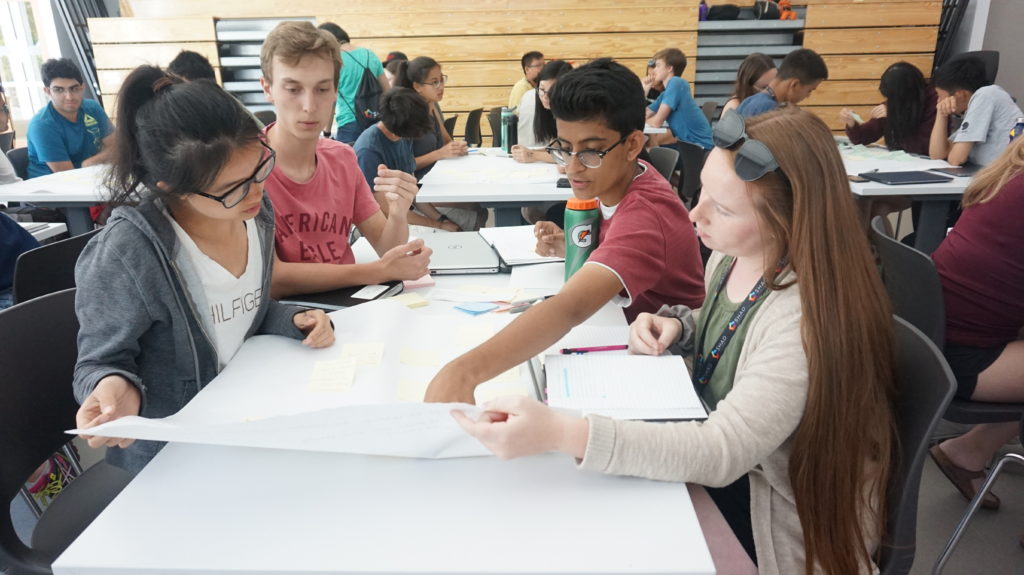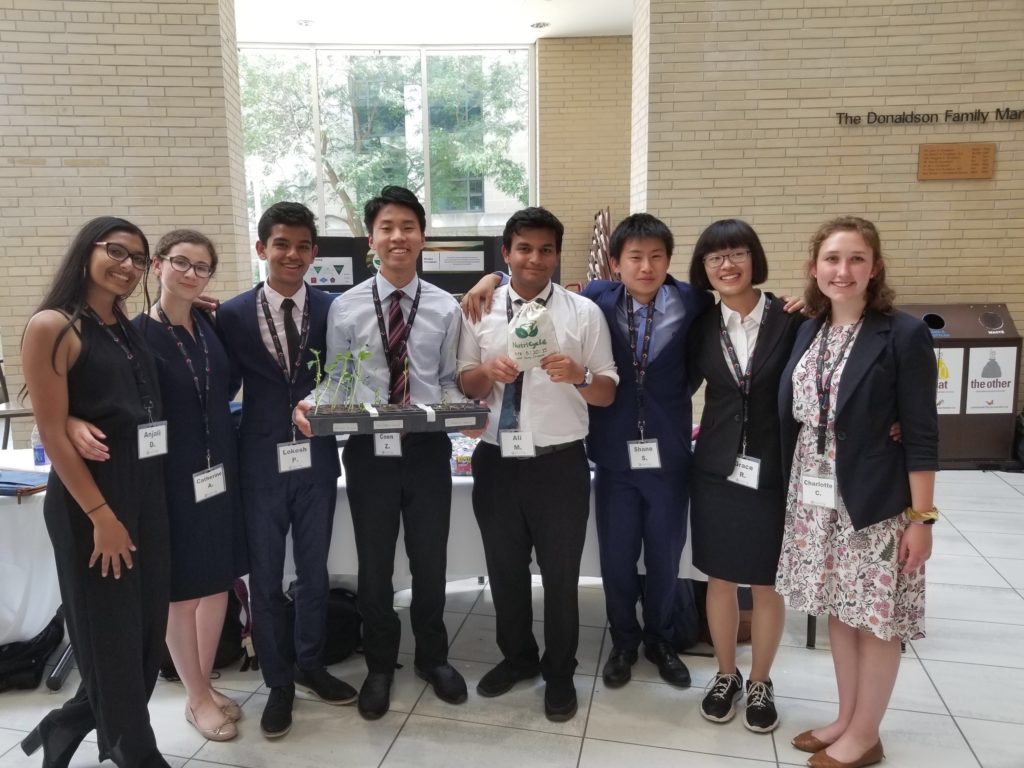Microfibre filters for laundry machines. Self-cleaning recycling bins. Smart devices to make any toilet eco-friendly. These are just a few of the innovative prototypes thought-up by over 1,000 high school students to help Canadians impactfully reduce their waste.
The Real-World Design Project is a defining part of the Shad program and a redefining moment for Shads themselves. Some arrive to their campus without any entrepreneurship skills, but leave the program enlightened—prepared to make prototypes, develop business plans, and make a pitch in front of any audience.
Shads have no idea what the theme will be going into the program, but this year’s theme of waste reduction did not disappoint.
“We come from different communities and even though our communities have different structures, socially and infrastructurally, we all realize that we are facing the same problem with waste nationwide and internationally,” says Keagan Yap, Windsor, ON, Shad2019. “We can come together and bring our influences from our communities to create the best solution possible.”
So that’s exactly what they did. All 17 Shad campuses dived into the problem— some visiting waste management facilities and others welcoming industry professionals to speak on the topic of reducing waste.
After a lecture from Prof. Calvin Lakham yesterday to help us frame our understanding of waste management, @shadyorkU is offsite today at @CanadaFibers waste sorting facility to help us more effectively empathize without users and more narrowly define our problem. pic.twitter.com/lbznojw9Ps
— Sarah Leaper (@leaperrr) July 3, 2019
It is a great day to learn about proper composting and what happens when we compost. Out of the 70,000 households in Saskatoon only 8,500 are compost of the composting project. Hoping for all 70,000 households to compost by 2023. #STEAMForGood. #Shad2019 pic.twitter.com/fB2oFypcWU
— Shad Saskatchewan (@Shad_Sask) July 2, 2019
At Shad Queens, they started with a workshop at the Dunin-Deshpande Queen’s Innovation Centre, a hub that drives innovation and entrepreneurship in Kingston, ON. They often introduce high school students to design thinking—a collaborative process used to solve human-centred problems.
Before starting the workshop, Shads toured local shops, large chain outlets, and walked along the shore of Lake Ontario—all while taking photos and talking with locals to hear different perspectives about waste management.
They discussed their findings in groups, how stores were using single-use plastics, and how garbage and recycling was not properly sorted at parks and often littered along the waterfront.
“There’s not any actual accessible public garbage around where I am from so a lot of people just tend to litter,” says Jolie Jeddore, Cape Breton, NS, Shad2019.

During the 27-days of the program, Shads spend countless hours with their groups and mentors, narrowing down a solution, creating business plans, testing prototypes, and learning how to pitch their products.
And each campus offered a unique pitching experience: York hosted a panel of angel investors, Lakehead livestreamed their pitches, and UNB shared their solutions with international friends.
Shads are pitching their ideas to our friends in South Africa as they celebrate Nelson Mandela Day. Empowering Change Makers around the world. pic.twitter.com/3sbigPaXo5
— @ShadUNB (@ShadUNB) July 18, 2019
Thanks to @YorkAngels‘s Jennifer Renda and Angelo Del Duca, and @Opeoplenetwork‘s @JefferyPotvin for listening to #ShadYork2019 pitches and providing feedback! #Mentor #Angels #Entrepreneur #Community @shadyorkU pic.twitter.com/ok9xrW4aYs
— Lucas Chang (@Lucas_Chang) July 20, 2019
But pitching can be a daunting process, standing in front of your peers and professionals is no easy feat.
“There was one person that didn’t really talk as much during the Shad program, but seeing him do the business pitch, I was just really proud of him,” says Catherine Andary, Windsor, ON, Shad2019. “I think the presentations really made us step out of our comfort zones and do something we’ve never done before.”
Catherine and her team ended up winning the Overall and Best Prototype Awards at Shad McMaster for their product, “NutriCycle”.

From left to right: Anjali Dhaliwal, Catherine Andary, Lokesh Patel, Coen Zeng, Ali Mecklai, Shane Sun, Grace Ren, and Charlotte Casey.
It’s a paper-based soil supplement, made with paper sludge, that increases water retention and decreases the capacity for erosion.
“We knew paper sludge was a product that was either incinerated or sent to landfills and needed to be used,” says Catherine. “So we contacted professionals to see what proper nutrients we would need to be adding to that and how we would be able to integrate ourselves into the fertilizer industry by using a product such as paper waste.”
After extensive research, the group got right into the science by growing bean plants in their fertilizer.
“We tested for water retention, for erosion, and for plant growth. Going in, I was really hoping that it would work,” says Catherine. “But seeing it compared to a name brand fertilizer, it was amazing.”
NutriCycle outperformed the name brand fertilizer in each experiment.
“One of the judges was actually an expert in the fertilizer industry, so as soon as we heard that I think we got a little bit nervous. But I think deep down we were all really confident about our product and that’s what allowed us to answer the questions afterwards.”
Catherine says her team hopes to test their fertilizer with other plants, and that they all agree there is a potential for NutriCycle to hit shelves in the future if it continues to do well in the prototyping phase.
“It was very rewarding. Even just afterwards, we all agreed that we had learned so much… I never really thought about entrepreneurship before going to Shad but now it seems like just another door that’s opened for me.”
After the program, some Shads are so inspired and become committed to developing their prototypes even further. Like Saad Baig who tested his team’s colour changing shingles, sharing what he learned at True North. Or Jonah Leinwand and his Shad-inspired prototype that he showed-off at the Canada-Wide Science Fair.